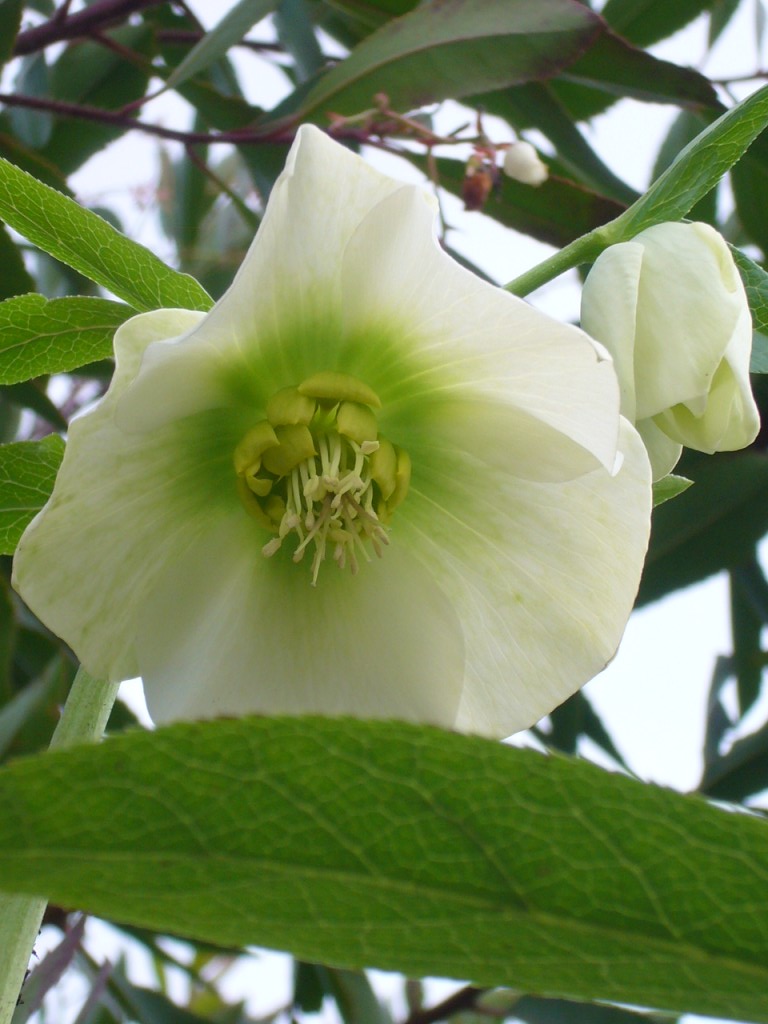Helleborus orientalis (Lenten Rose)
If you live in the Pacific Northwest and you educate yourself about gardening you can have plants blooming in your yard year round. That’s right, even in the cold and muddy end of winter you can go out and pick yourself a little bouquet. Combine the green leafy plants that are not in bloom with the bloomers to create ingenious arrangements out of what seems like nothing. Three plants are actually in bloom in my garden right now: Daphne odora “Zuiko Nishiki”, Chaenomeles hollandia, and the Helleborus orientalis.
Two varieties of hellebore are Helleborus orientalis (Lenten Rose) and Helleborus niger (Christmas Rose). I am not an expert at telling them apart, but I’ve noticed the Christmas Rose has foliage that is a darker green. These plants will stay green and lovely throughout the winter. Hellebore doesn’t mind the damp and a bit of cold, but would like a some shelter and will need some shade for later in the season. Plant your hellebore where the soil stays moist – if you already have a spot where ferns and hostas are thriving and it’s not deep shade that would be perfect. Hellebore is not prone to disease as long as you make sure to remove the dead leaves and stems. If you don’t remove them you may see some black spot.
There are many different colors of hellebore. I’ve seen wine red, purple, dark purple, glowing green, yellow, creamy yellow, and white. On some hellebore the blooms change color as they age so that there are multicolored blooms on a single plant. For example the flowers may open white, then turn a bright green. The foliage is a nice glossy dark green. If you are particular about the color you want to grow it is best to buy them when they are in bloom. I prefer the ones with long stems but the short stemmed varieties are beautiful as well.
Be careful to wear your gloves when working with hellebore as it is poisonous and some people have reactions to the sap.

